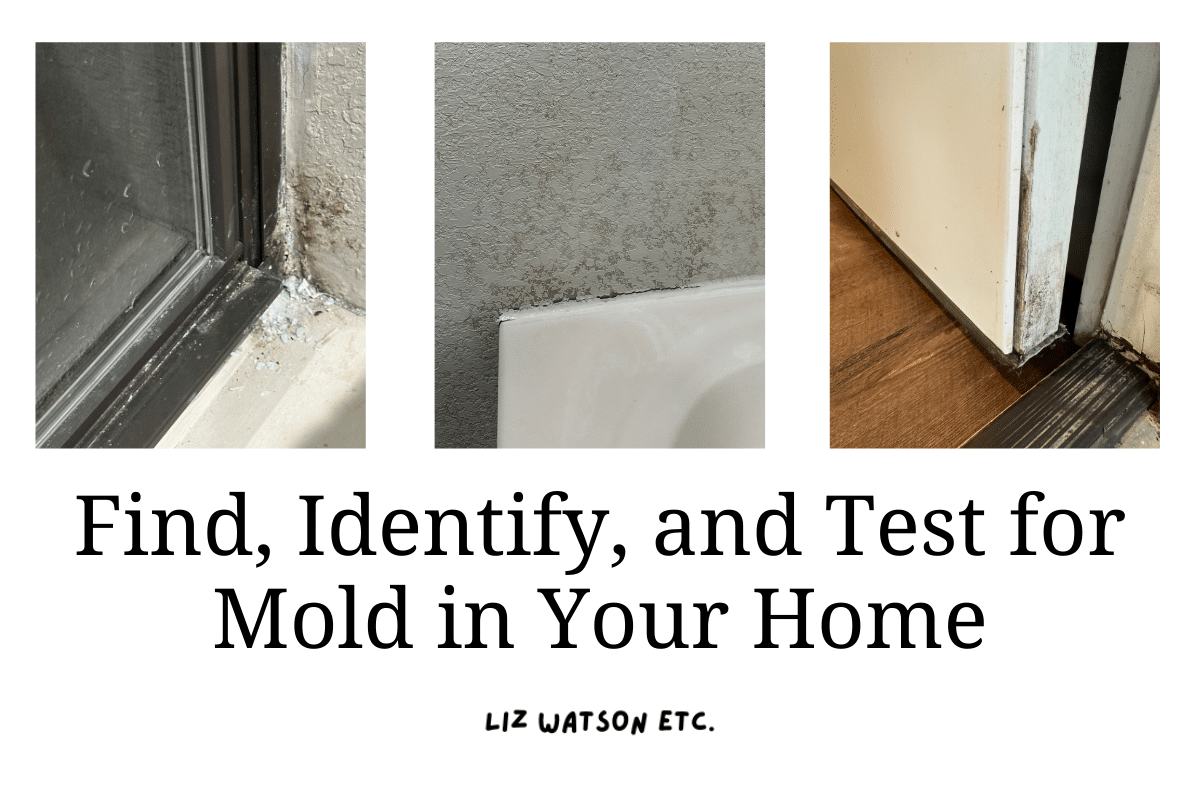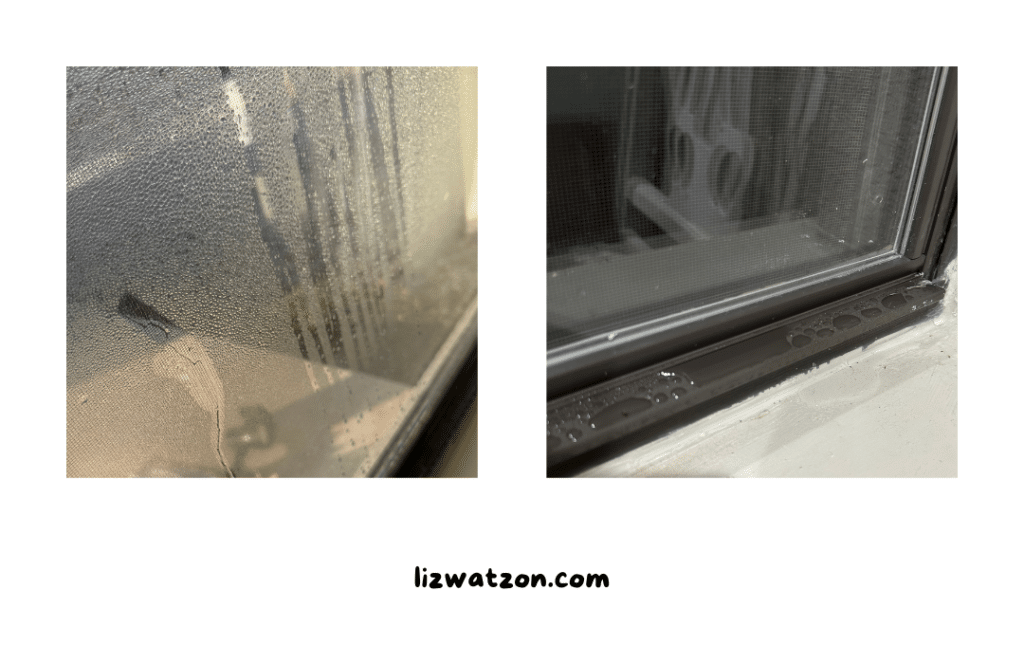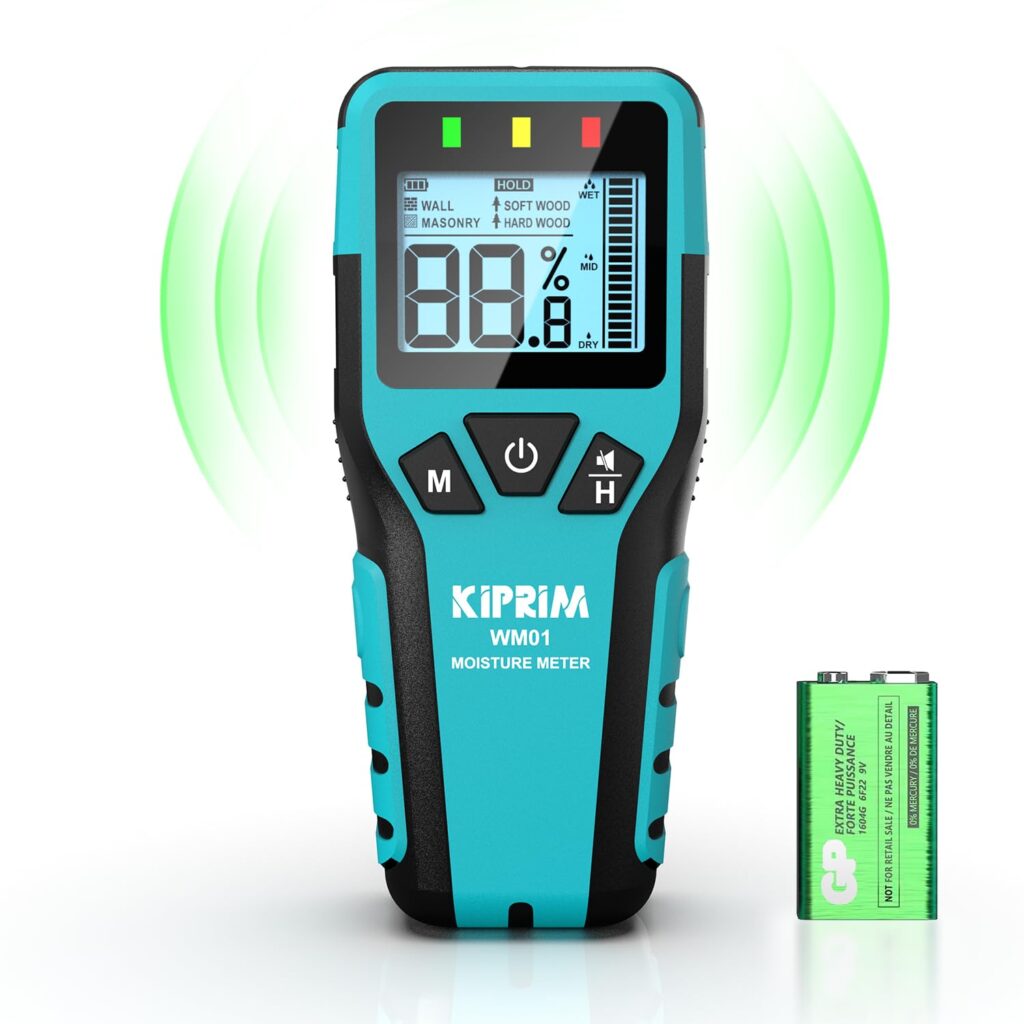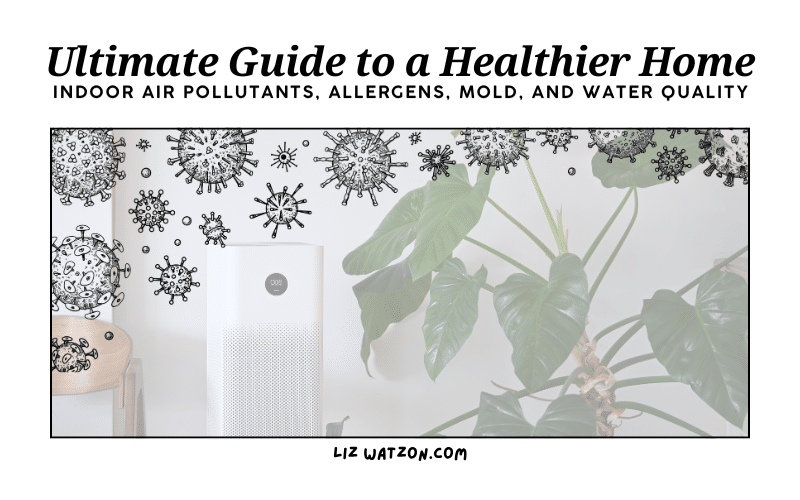Your cart is currently empty!

Is There Toxic Mold in My Home? 3 Steps to Find and Identify It
For years, I battled recurring infections, fatigue, and brain fog. These issues affected my ability to work and my quality of life. The last thing I expected to find was that my home was making me sick. During the long journey of identifying the cause of my chronic health issues, I made a discovery. I found the unrecognized hidden danger of toxic mold and its effects on my family’s health.
Disclaimer: I am not a doctor and this post is not intended to diagnose or provide any official medical advice.
Here’s what I did to find, identify, and assess the toxic mold in my home in three simple steps:
The neurological effects of mold make it even harder to recognize. Insomnia, vision impairments, confusion, and difficulty concentrating made everyday tasks so hard that I started to miss the signs completely.
Through my experience and extensive research I want to provide a tool for others who may be dealing with a similar situation. If you or someone in your family have been experiencing adverse health affects and you are suspecting mold as the culprit, here are the steps to take in order to locate the potential cause of growth.
Affiliate Disclaimer: This post includes affiliate links. Any affiliate link included in this and all of my blog posts are products or services I have personally used and recommend based on my experience with them.
1. Thoroughly inspect your home
- Free Mold Inspection Checklist Download
2. Check the Humidity and Dampness
3. Test for mold
- Mold Test Home Swab Kit
- ERMI by Envirobiomics in Depth Mold Analysis
- Professional Mold Assessment
How Does Mold Effect Your Body?
Knowing the terrible effects that mold exposure can have on you and your family is essential. Mold can develop in hidden areas. Mold can grow inside air ducts, drywall, on wood, carpets, and paper. It can grow anywhere that’s continuously exposed to moisture, like under the kitchen or bathroom sinks.
You can’t always easily detect it. Therefore, it’s important to know the signs your body will show when exposed to harmful environmental factors. Symptoms look different person to person and they look different in children and adults. 25% of the population have a genetic susceptibility to mold exposure and will show more symptoms earlier than others.
Symptoms in Children:
These will develop very early on and are persistent and occur often. Commonly excused as a “cold” or “just allergies” the root of these symptoms is almost always indoor environment.
- allergy symptoms — cough, sneezing, runny nose, congestion. source.
- skin irritations — frequent rashes, skin sensitivity, eczema, dry skin
- gastrointestinal issues — loss of appetite, gas, diarrhea, vomiting, and nausea
- respiratory problems — asthma, croup, pneumonia, bronchitis
- sleep disturbances — night terrors, restlessness, night sweats, frequently waking
- neurological — hyperactivity, attention deficit, anxiety, PANs
Symptoms in Adults:
Symptoms often increase and intensify with prolonged exposure
- allergy symptoms — cough, sneezing, runny nose, congestion, nose bleeds
- gastrointestinal — bloating, gas, constipation, irregular/irritable bowel
- respiratory problems — frequent sinus infection, post nasal drip, congestion
- immune system — fatigue, brain fog, swollen lymph nodes
- neurological — mood swings, anxiety, irritability, food cravings
- sleep disturbances — insomnia, frequently waking, sleep apnea
- joint and muscle — neck and shoulder pain, joint pain, muscle weakness, muscle cramps or spasms
Finding and Testing for Mold in Your Home:
The timeline of my symptoms began shortly after I moved into my new apartment. It was a freshly built unit, and I was the first tenant. I assumed that new construction meant it was clean and safe. I had no awareness of toxins and microbials other than bacteria and viruses, let alone: mycotoxins produced by mold.
After two and a half years of leasing and two and half years of searching for answers to my symptoms, the connection between my chronic health issues and the time I had lived in the apartment was finally made.
1. Thoroughly Inspect your home.
(Download free inspection checklist here)
- HVAC system: Check for leaks or disconnected sections in the ductwork, and look for water leakage or dust around the HVAC equipment.
- Water damage: Check for signs of leaks or water damage under sinks, around faucets, around the base of toilets and tubs, and under any appliances that use water.
- Doors and windows: Look for signs of mold and water spots on windows and window frames. Condensation is a good indication.
- Odors: Check the air for a musty, stale, or damp smell.
- Plumbing: Ensure that pipes are properly maintained and that there are no leaks.
- Crawl space: Look for discolored growth on any organic components, especially on wood flooring and insulation.
Mold spores are invisible to the naked eye, so often a musty or “wet” smell can be a good indicator. Mold growth can occur out of sight like behind drywall, within plumbing systems, in your hot water tank, under the flooring, in your washing machine, etc.
Other things to consider if you suspect mold in your home
- Whether materials had been wet for more than 48 hours when home was built
- The building’s history of water damage or flooding
- Whether there are hidden sources of water
- Whether the humidity is too high
- Whether building occupants report health problems
- Whether building materials or furnishings are visibly damaged
2. Check the Humidity and Dampness
Where there is moisture, there is likely mold. The key to preventing and maintaining the health of your home is to eliminate the moisture.
With a busy work schedule, fighting constant fatigue, and living with a now toddler, I did not often have the time or energy to do an extensive deep clean. I was mortified to find the mold growth hidden in plain sight. My mind was reeling, I thought back to times that I had noticed it but had no idea what I was actually dealing with or that it was harming me.
Average Humidity in the U.S. by State

High humidity levels provide the necessary moisture for mold to grow. In Oklahoma (and many other states) the humidity level ranges from 60-70% year round. Mold thrives anywhere the humidity is greater than 50% so you can assume it is likely able to survive in your home.

If you experience condensation like this, likely your indoor humidity is too high feeding the mold spores that may be present. I have linked a dehumidifier here (this is one of the top 5 purchases I have made throughout my journey with mold). AEOCKY 1200 sq.ft Rotary Dehumidifier is the best and most affordable I have found.
Determining the humidity in your home and whether or not there is hidden dampness or leaks does require tools to get an accurate reading.
Air Quality Monitor:
To determine the exact humidity levels you will need an indoor air quality monitor (which I think is essential for every home) the one I use is the Amazon Smart Air Quality Monitor. It is simple to use and you can check your air quality through the app from anywhere. I like that it monitors various factors including VOCs and Carbon Monoxide. However, you can also get a simple air monitor like this from Walmart.

Moisture Meter:
a moisture reading of 0-15% is quite normal and gives no cause for concern. However, moisture readings in excess of 15% indicate the need for further inspection. Levels between 25-30% indicate that there may be water damage. Moisture meters are available for purchase at most hardware stores and online, here is the one I have: Kiprim Pinless Moisture Meter

3. Test Your Home for Mold
There are three main ways to test for mold in your home. Mold Test Home Swab Kit, ERMI at Home Mold Analysis, and a Mold Assessment by a Professional Mold Inspection Company. By far the best test I recommend is the ERMI in depth analysis. I will explain why below.
Three Types of Mold Tests
- Mold Test Home Swab Kit
- ERMI by Envirobiomics in Depth Mold Analysis
- Professional Mold Assessment
Mold Test Home Swab Kit:
This test is effective for identifying small amounts of mold and are affordable when you begin suspecting mold. You will use the q-tips to collect samples from areas in your home, place them on the palette and leave the palettes wrapped in a warm environment for 5-7 days.
There is no accurate information to gain from these. This at home mold test kit does not determine the mold spore volume or species of mold. It does not assess if that volume could be affecting your health. However, it is a great visual if you are trying to help a friend or family member visualize that mold may be present.
Mold spores are present in all homes and do not necessarily mean there is current mold growth, swabs do not assess this. They do not assess the capacity or determine if there is a significant issue. They are not data driven and do not accurately identify the species of mold actually growing.
Here are samples I collected in my apartment:

ERMI by Envirobiomics in Depth Mold Analysis
ERMI (Environmental Relative Moldiness Index) Is the most in-depth test available. It is quickest, most precise, and distinctive microbial testing service. I really like how simple and convenient it is to use.
You simply order the testing kit online, collect dust samples from multiple areas in the home with the microfiber cloth, and return in the included return envelope. The cloth is returned to their testing facility and the analytical report they send back is phenomenal. Results are extremely in depth and quickly reported.


The ERMI by Envirobinomics is specifically for assessing the environment and how it may be directly affecting your health. It is a great tool to evaluate the potential risk of indoor mold growth and associated health effects to occupants.
EnviroBiomics is a leading commercial environmental laboratory in the USA. They specialize in analyzing samples to determine the presence of mold, bacteria, and other microorganisms. They also offer great resources for professional inspections and resources.
Professional Mold Assessment
While you don’t always need professional mold testing, their expertise can provide peace of mind and ensure that mold issues are handled effectively. I will say, make sure you do your research on the inspector and request an assessment not just swabs or air samples. The assessment will include swabs and samples, but also have a thorough report of the types of mold similar to the ERMI.
If you rent or lease I highly recommend requesting an inspection from a professional that you find and research thoroughly, most landlords will meet this request due to state laws of habitability. The landlord is typically responsible to pay for this.
A professional mold assessment can be very costly ($350-$800) which is why I don’t recommend it as a first choice when trying to figure out if you have mold in your home. HOWEVER, when you have established there is mold in your home a professional remediation is highly advised. Especially if one or more people are already experiencing symptoms or have a compromised immune system.
From the Heart
If you’re experiencing unexplained chronic symptoms, consider environmental factors – especially if they coincide with changes in your living situation. The path to healing often begins with identifying the source of exposure.
I know the thought of having mold in your home is scary and confusing. From the bottom of my heart I know how it feels when an entire new world appears and you may feel lost and, at times, hopeless.
If you found your way here, you have already suspected or experienced symptoms for too long. I hope to provide you with the most effective resources to make your journey easier than mine.
If you or anyone in your family are experiencing unexplained symptoms with no other apparent cause, it is essential to rule out mold as the cause. I hope this brings you guidance and comfort, for more resources and related posts:
Discover more from Lizwatzon.com
Subscribe to get the latest posts sent to your email.


2 responses to “Is There Toxic Mold in My Home? 3 Steps to Find and Identify It”
[…] (Read: How to Inspect and Test Your Home for Mold) […]
[…] Mold and Humidity: Poor ventilation and damp conditions lead to mold growth, which can cause serious respiratory illnesses. more about mold […]